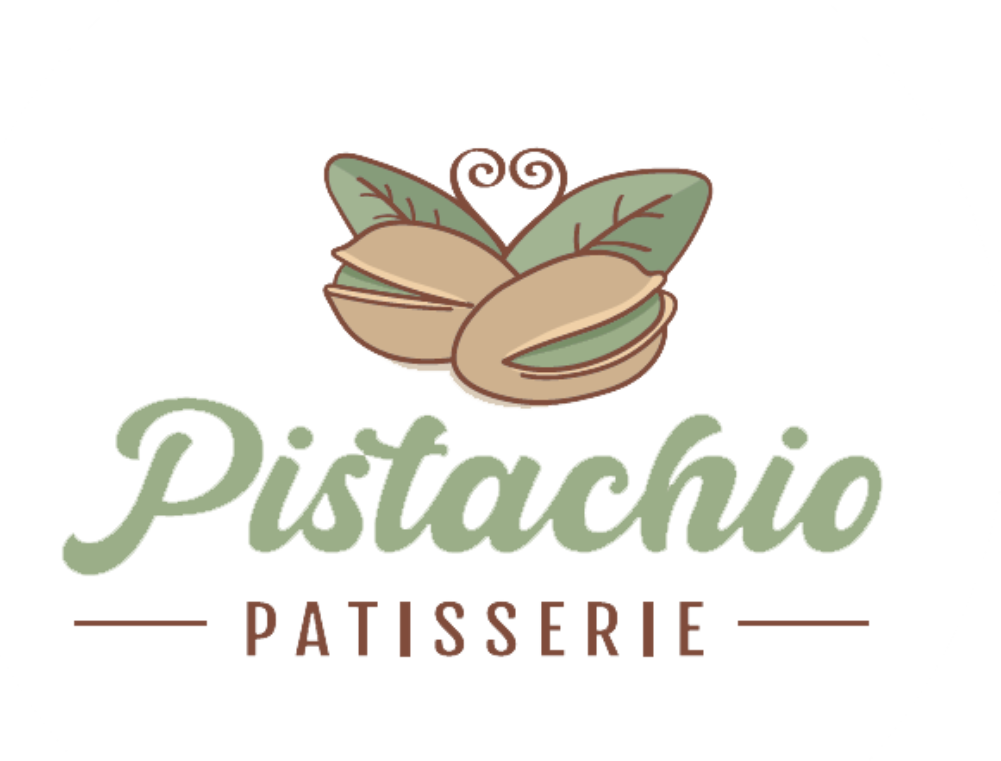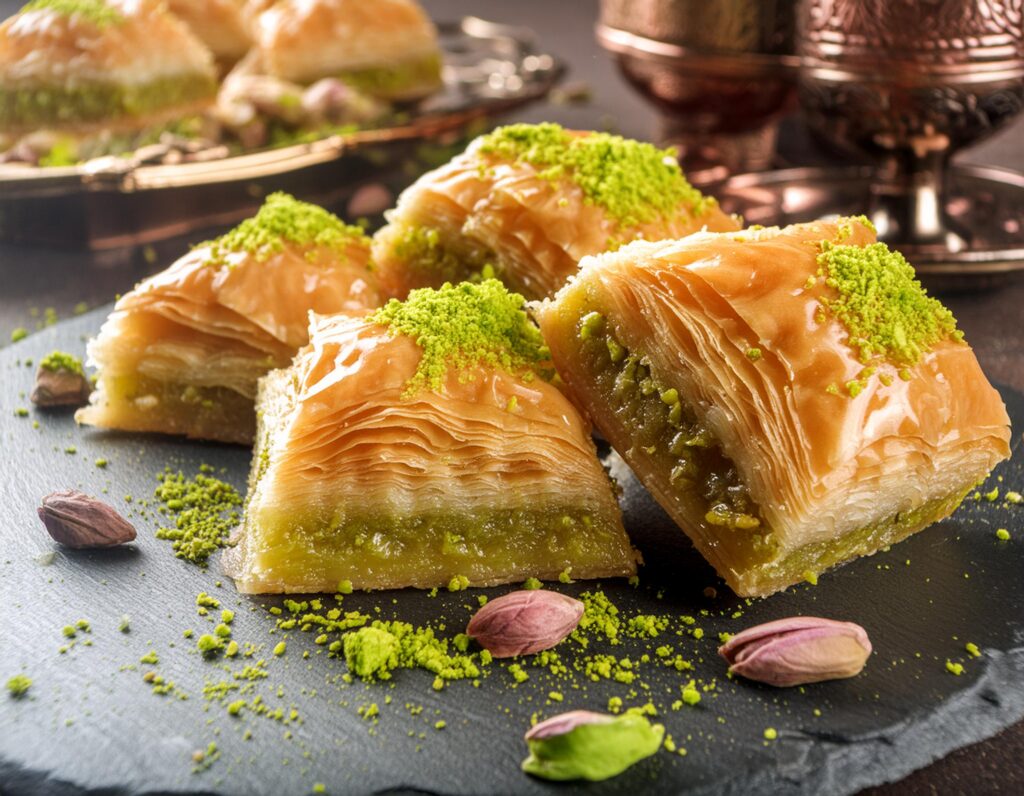Baklava
Pistachio Baklava
Pistachio Baklava: A Culinary Masterpiece of the Middle East
Pistachio Baklava stands as a jewel in the crown of Middle Eastern desserts, a sumptuous treat that combines the crunch of pistachios with the sweetness of syrup, all wrapped in layers of delicate, buttery filo pastry. This dessert is not only a festival of flavors and textures but also a storied dish with deep cultural roots and artisanal crafting techniques.
Historical Roots
While baklava itself has been a subject of numerous origin stories, Pistachio Baklava is most closely associated with the regions that are today part of Turkey and Iran, where pistachios grow abundantly. The dessert we recognize today was likely perfected in the royal kitchens of the Ottoman Empire, where it became a sophisticated treat served during important celebrations and to visiting dignitaries.
Ingredients and Preparation
The making of Pistachio Baklava is both an art and a science, requiring precision and patience. The key components are:
- Filo Dough: Ultra-thin sheets of unleavened dough, which are layered and brushed with butter. The dough is either made by hand or sourced from skilled artisans to ensure its delicate texture.
- Pistachios: The star of the dish, these are usually of the highest quality, often sourced from Gaziantep, a region in Turkey renowned for its pistachios. They are finely ground or left in slightly larger chunks, depending on regional preferences.
- Syrup: Typically made from sugar and water, and sometimes enriched with honey. It may be flavored with lemon juice, rose water, or orange blossom water to add a subtle fragrance.
The assembly involves layering sheets of filo dough, each brushed with melted butter, with layers of pistachios spread between them. The assembled pastry is then cut into characteristic diamond or rectangular shapes before baking. Once baked to golden perfection, the syrup is poured over the hot baklava, allowing it to soak through the layers, creating a harmonious blend of sweet and nutty flavors.
Cultural Significance
Pistachio Baklava is more than just a dessert in the Middle East; it is a symbol of hospitality and generosity. Serving baklava is a sign of respect and affection, often presented to guests as a welcoming gesture or to celebrate special occasions like weddings, religious holidays, and festivals.
Regional Variations
While Pistachio Baklava is beloved across the Middle East and the Mediterranean, subtle variations exist:
- Turkish Pistachio Baklava: Often uses a richer amount of syrup and may include a hint of lemon to cut through the sweetness.
- Middle Eastern Variants: These might incorporate cardamom in the syrup, pairing beautifully with the pistachio’s flavor.
Modern Twists
Chefs around the world have experimented with the traditional Pistachio Baklava recipe, incorporating elements like dark chocolate drizzles, cream cheese layers, or even integrating other types of nuts for a more complex flavor profile. Such innovations keep the dessert relevant and exciting for new generations of dessert enthusiasts.
Conclusion
Pistachio Baklava is a dessert that delights the senses and brings people together, encapsulating the spirit of the regions from which it hails. Its preparation is a testament to the skill of the baker, and its enjoyment a shared cultural experience that transcends borders. Whether enjoyed in a bustling bazaar, a quiet café, or the comfort of home, Pistachio Baklava remains a timeless treasure of the culinary world, offering a bite of history enriched with the flavors of the Middle East.

